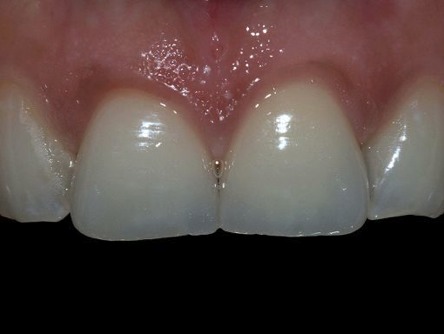
CARLO ZAPPALA'
M.D. - D.D.S.
Create da Charles L. Pincus agli inizi del secolo scorso, le faccette vennero utilizzate all'inizio solo per modificare temporaneamente l'aspetto dei denti degli attori di Hollywood, .
Oggi, le faccette sono uno presidio terapeutico di assoluta importanza in Odontoiatria Estetica.
La faccetta si può utilizzare per ripristinare un singolo dente che potrebbe essere stato fratturato o scolorito, o più denti per creare un tipo di ristrutturazione altamente estetica.
Molte persone, ad esempio, hanno denti piccoli con conseguenti spazi che non possono essere facilmente chiusi da Ortodonzia; altre , invece, hanno usurato i bordi dei loro denti con un conseguente aspetto prematuramente invecchiato, mentre altri ancora possiedono denti malposizionati, che possono apparire persino deformati.
Le faccette permettono più possibile di chiudere questi spazi, allungare i denti che sono stati accorciati da usura, riempire i triangoli neri tra i denti legati alla recessione gengivale, fornire un colore uniforme, la forma e la simmetria, e fare apparire i denti dritti e regolari. Le faccette in ceramica, con degli spessori minimi possono essere un'opzione efficace per i pazienti con l'invecchiamento della dentizione.
La faccetta dunque è un sottile strato di materiale ceramico o composito posto su un dente, sia per migliorare l'estetica di un dente, sia per proteggerlo un danno creato alla sua superficie.
Ci sono due tipi principali di materiali utilizzati per fabbricare una faccetta: ceramica o composito dentale.
Una faccetta in materiale composito può essere creata direttamente in bocca, o indirettamente, fabbricata presso un laboratorio odontotecnico specializzato, e poi incollata al dente, in genere utilizzando un cemento resinoso. Di contro, la faccetta in ceramica può essere solo indirettamente fabbricata in laboratorio.
La nostra Clinica rappresenta oggi uno dei leader più riconosciuti in questo campo a livello Mondiale.
Created in California by Charles Pincus at the beginning of last Century, the Laminate Veneers were useful for temporarily changing the appearance of actors' teeth.
The Laminate Veneers are an important tool for the Esthetic Dentistry. A dentist may use one laminate veneer to restore a single tooth that may have been fractured or discolored, or multiple teeth to create a "Hollywood" type of makeover. Many people have small teeth resulting in spaces that may not be easily closed by orthodontics. Some people have worn away the edges of their teeth resulting in a prematurely aged appearance, while others may have malpositioned teeth that appear crooked. Multiple veneers can close these spaces, lengthen teeth that have been shortened by wear, fill the black triangles between teeth caused by gum recession, provide a uniform color, shape, and symmetry, and make the teeth appear straight.
Dentists also recommend using thin porcelain veneers to strengthen worn teeth. Thin veneers is an effective option for aging patients with worn dentition. In many cases, minimal to none tooth preparation is needed when using porcelain veneers.
The Laminate Veneer is a thin layer of material placed over a tooth, either to improve the aesthetics of a tooth or to protect a damage to a tooth’s surface. There are two main types of material used to fabricate a laminate veneer, composite or dental ceramic. A composite Laminate Veneer may be directly placed (built-up in the mouth), or indirectly fabricated by a dental technician in a dental laboratory, and later bonded to the tooth, typically using a resin cement.
In contrast, a porcelain laminate veneer may only be indirectly fabricated.
Our Clinic is today one of the most representative leader in this field, officially recognized Worldwide.


